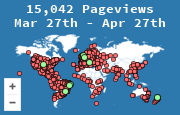Digital archive policy
To ensure the preservation, usability, and accessibility of content for long-term availability, there is a need for management policies and actions, known as digital preservation policies.
Principle of Digital Archiving
- Intellectual Property: RPCFO is committed to providing access to digital materials, respecting and upholding the intellectual property rights of authors and obtaining prior consent.
- Access: Digital preservation activities are carried out with the primary goal of long-term access to digital collections.
- Authenticity: Ensures that data remains unaltered and original data is preserved.
Challenges for Digital Data Preservation
- Technology (at the level of: hardware, system software, application software, data and file formats, storage media readers and controllers)
- Lack of metadata resulting in failure to locate information, also in the inability to process and read information due to lack of contextual information.
- The media used to store digital records is often unstable and deteriorates within a few years or decades at most, making digital records inaccessible.
- Incompatible file formats, especially for older software.
- Digital records may be lost in the event of natural disasters such as fire, flood, earthquake, equipment failure, or virus attack that disables stored data and systems.
- Digital records may be well-protected but so poorly identified and described that potential users cannot find them.
- Discontinuation of the journal for any reason leads to the extinction of published research, digital preservation keeps the research available.
Self-Archiving Rights
All authors have full copyright and self-archiving rights. Our self-archiving policies are detailed in RoMEO (ResearchersLinks is a green publisher of RoMEO, which is a database of copyright and self-archiving policies of publishers).
In addition, authors can archive their articles in open access repositories as "preprints".
RPCFO is archived in the Cariniana Network
The Cariniana Network emerged from the need to create a network of digital preservation services for Brazilian electronic documents at the Brazilian Institute of Information in Science and Technology – Ibict, with the aim of ensuring its continuous long-term access.
The project for the implementation of the Network was developed based on a decentralized infrastructure, using distributed computing resources. A distributed digital preservation network needs the participation of the institutions that hold these documents and their infrastructure, in a standardized and secure environment that guarantees permanent access and monitored storage of digital documents. With the support of FINEP, in January 2013 the Institute joined the LOCKSS Program of Stanford University.
The Institute's participation in initiatives such as LOCKSS represents a significant contribution to scientific information in Brazil, which will consequently enable the preservation of the content of publications in international networks of institutions participating in the LOCKSS Initiative. Initially, activities were developed in partnership with six Brazilian universities with the support of their respective information and computing centers. The Network initially structured the storage service for electronic journals of the partner institutions of the project, which use the OJS platform.
The service was extended to institutions with open access publications, including about 1000 journal titles. The next stage aims to expand the Network's services, including the preservation of electronic publications in the DSpace software, such as books, theses, and dissertations in electronic format. Activities are being directed towards human resource training and facilitating the automation of processes for identification, digitization, storage, validation, and conversion to new digital formats.
The development of a digital preservation services network promotes the sharing of studies and research, as well as the integration of the institutional digital memory content in a consortial and federated manner.


























